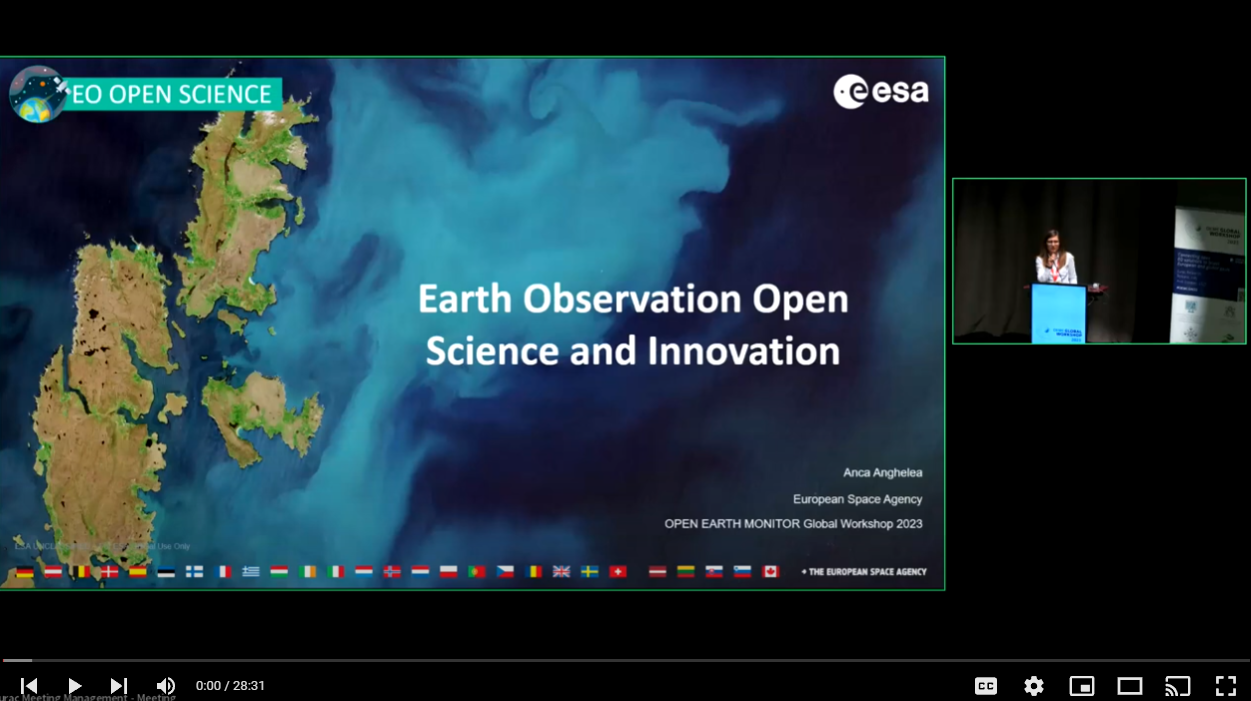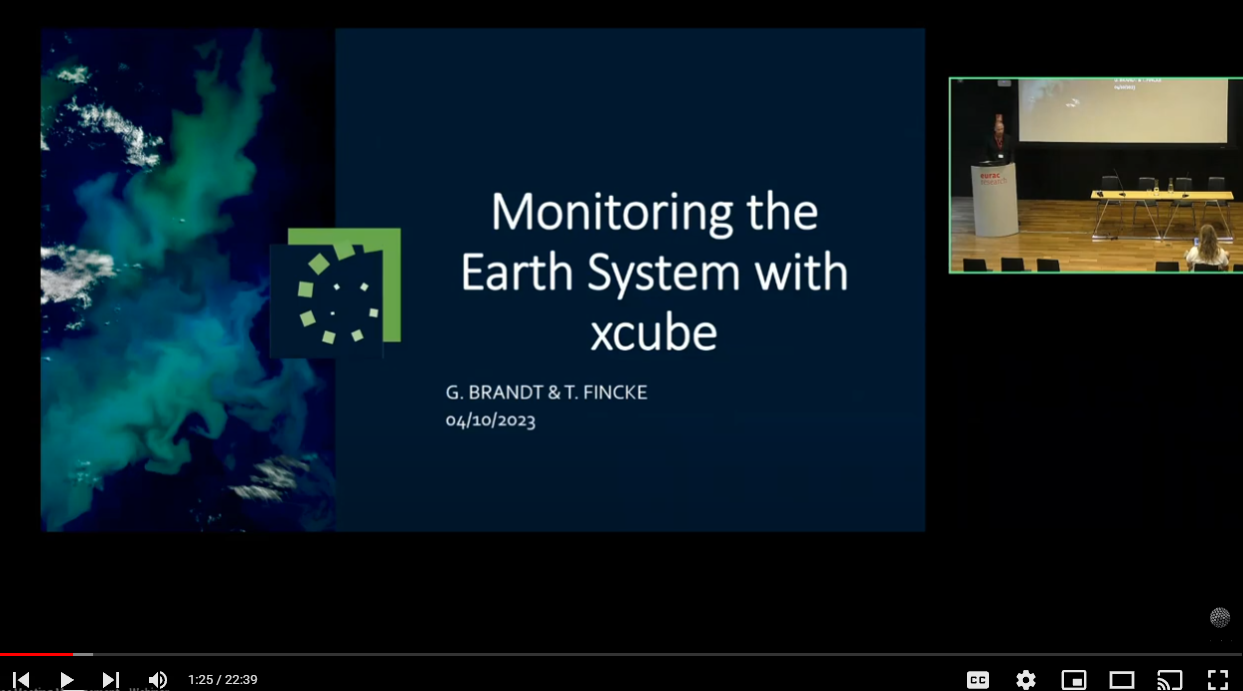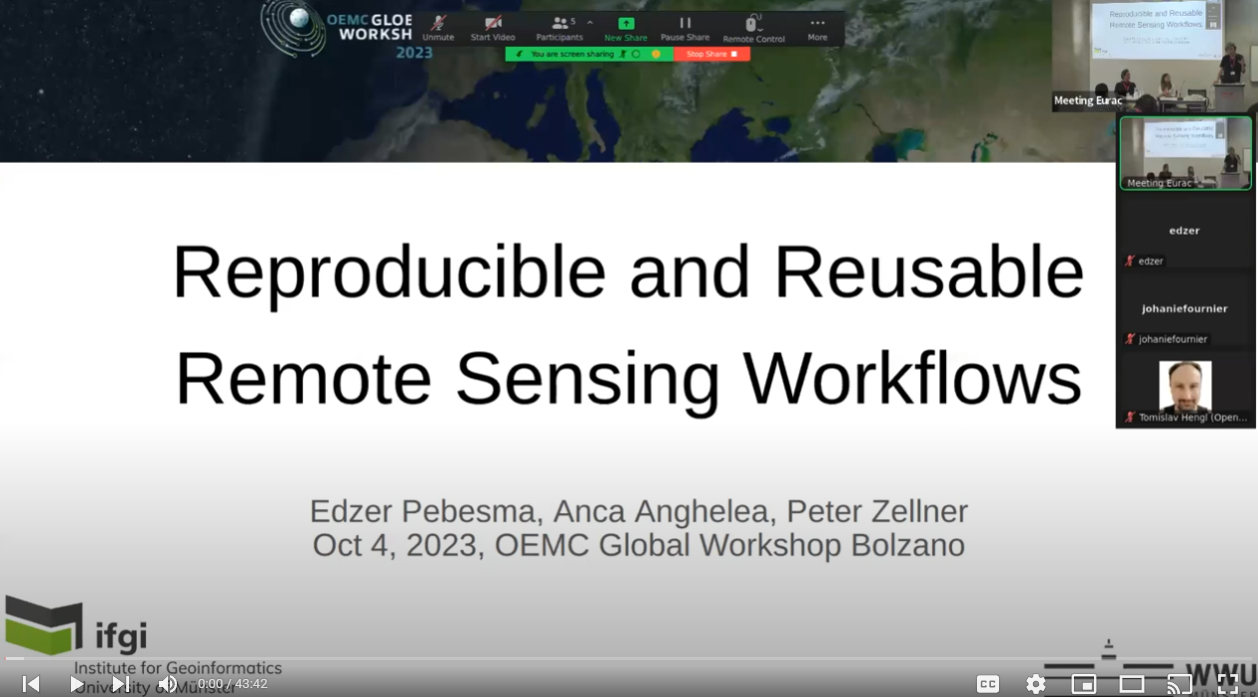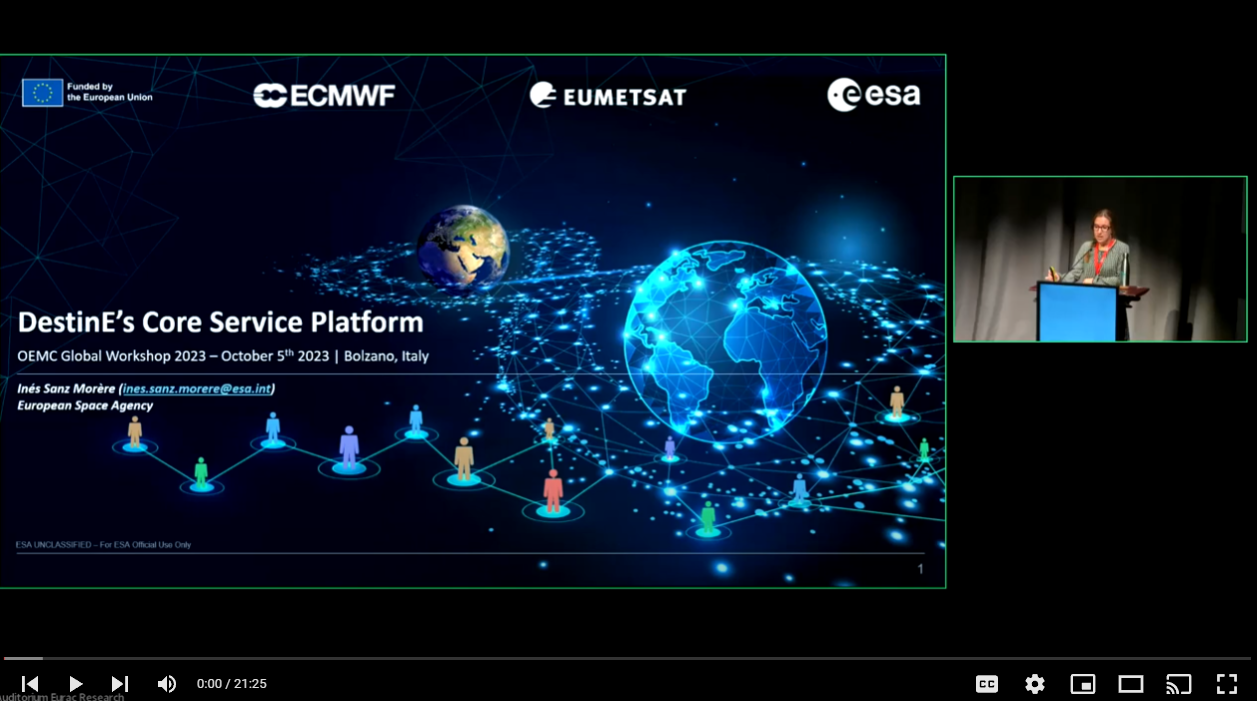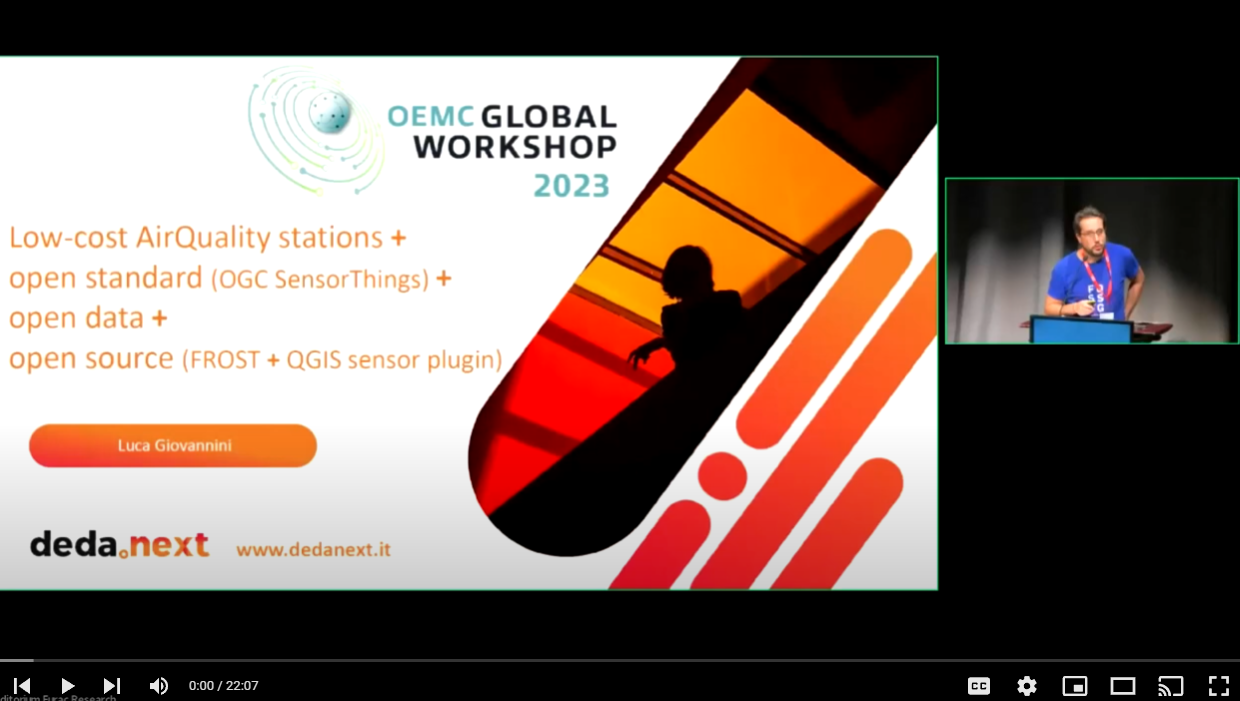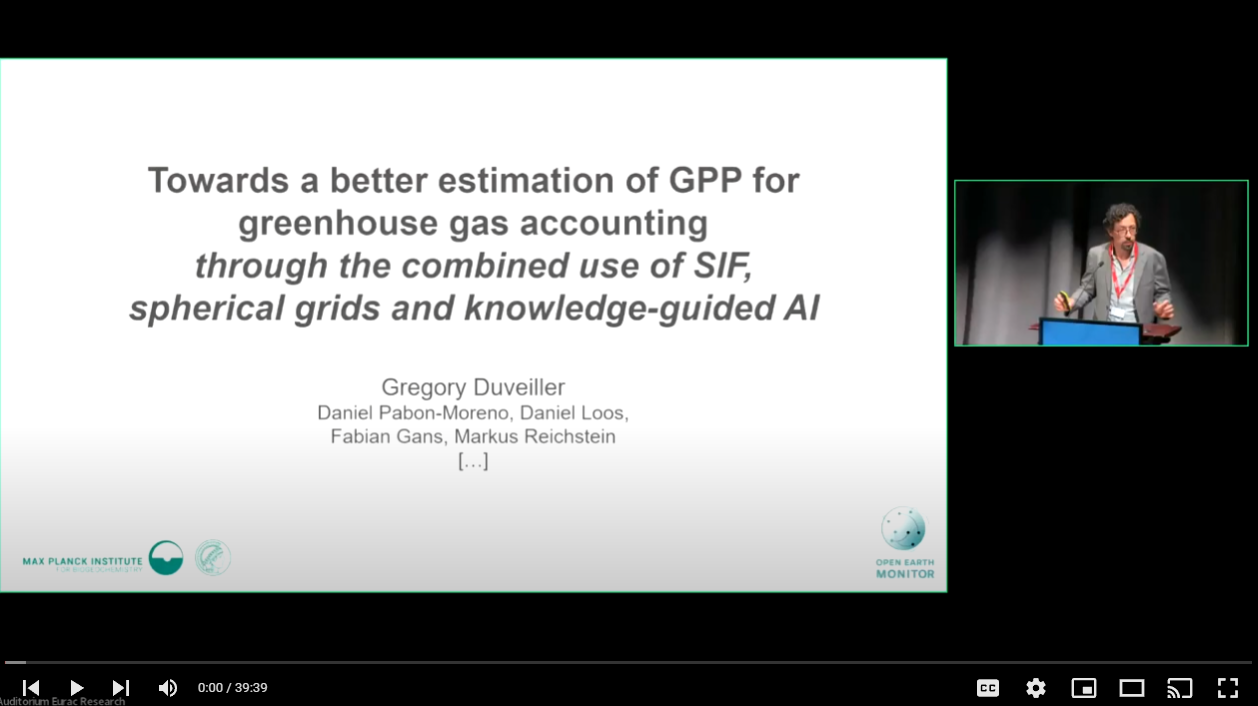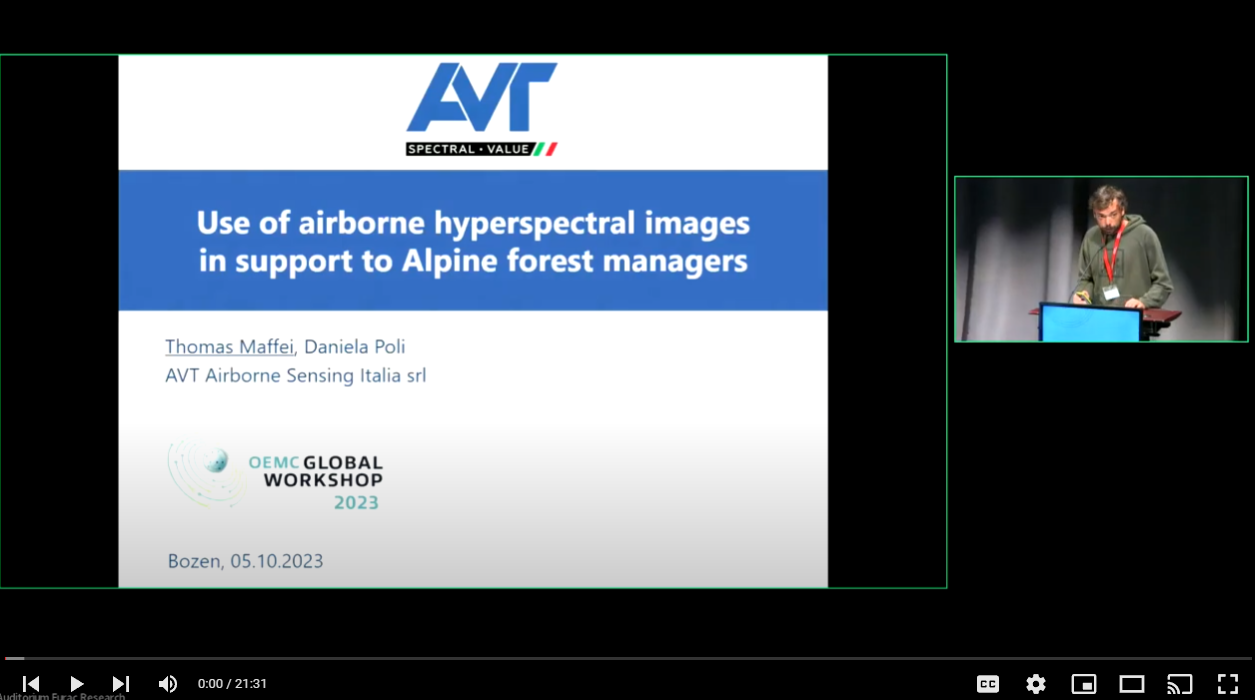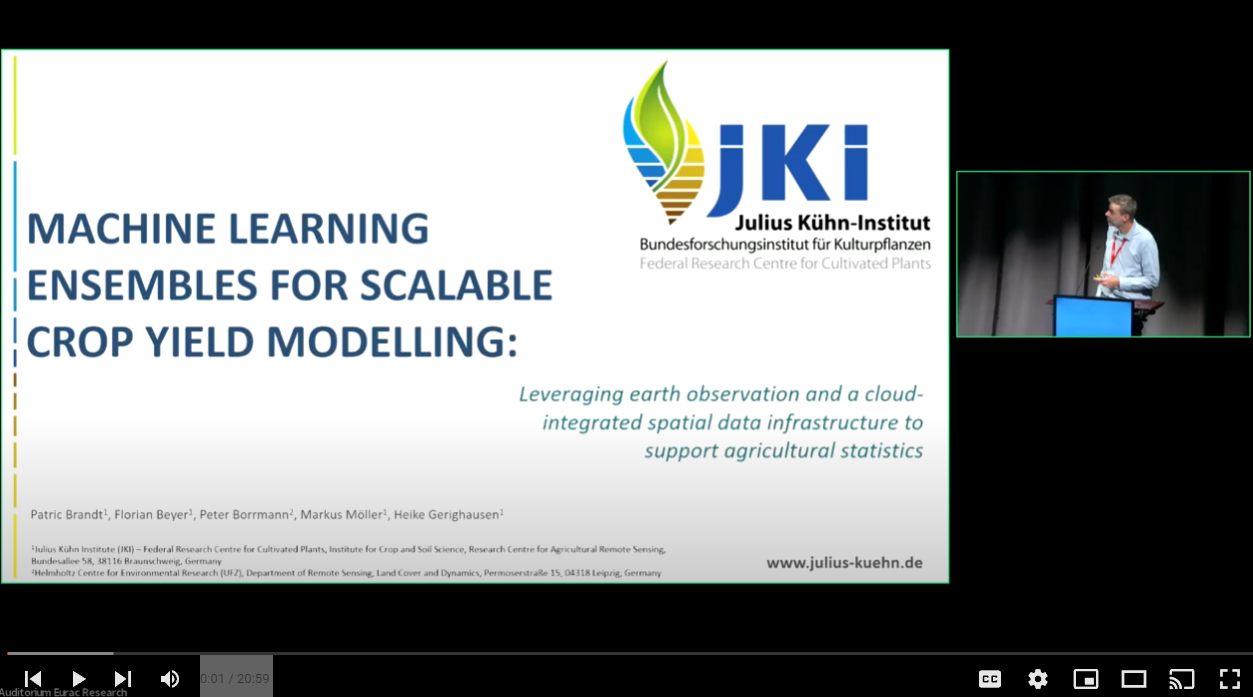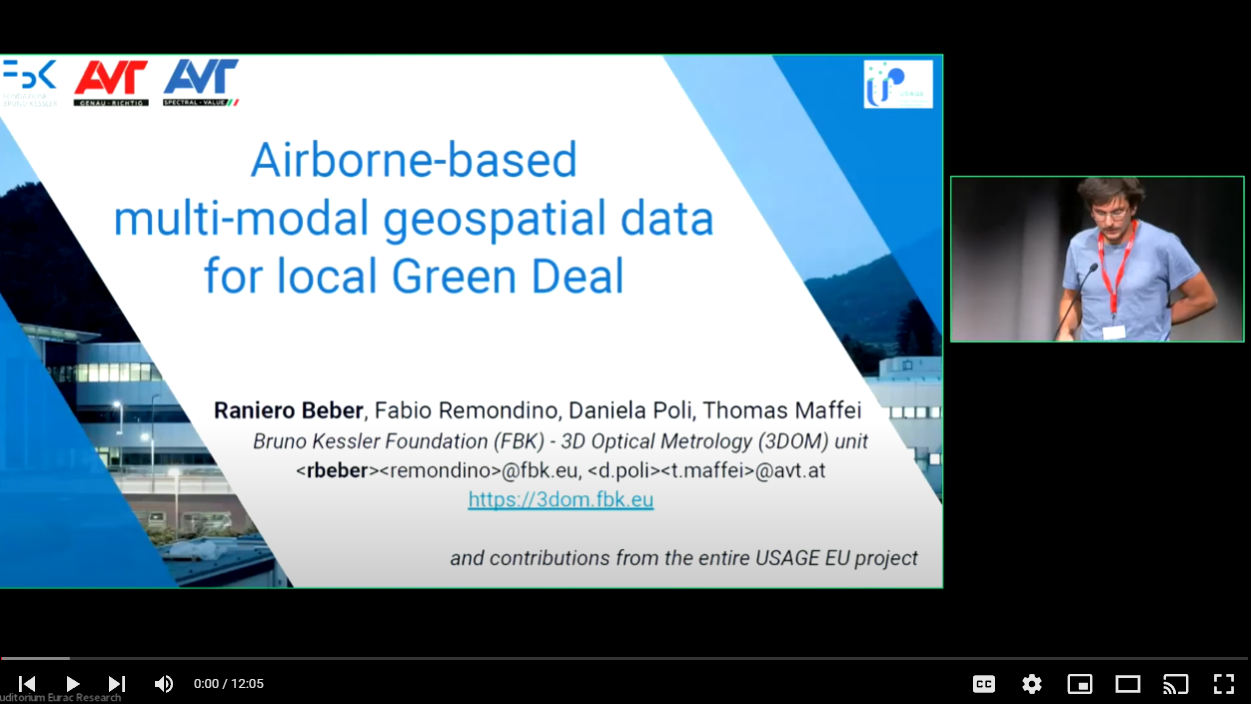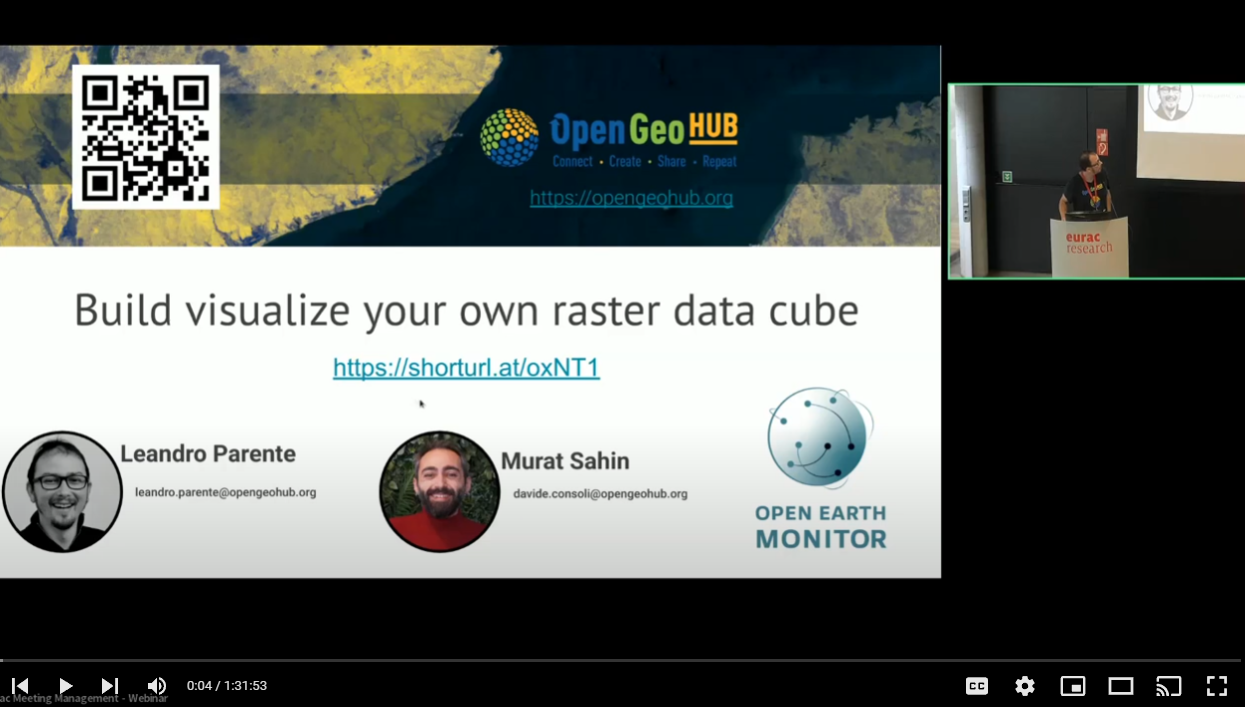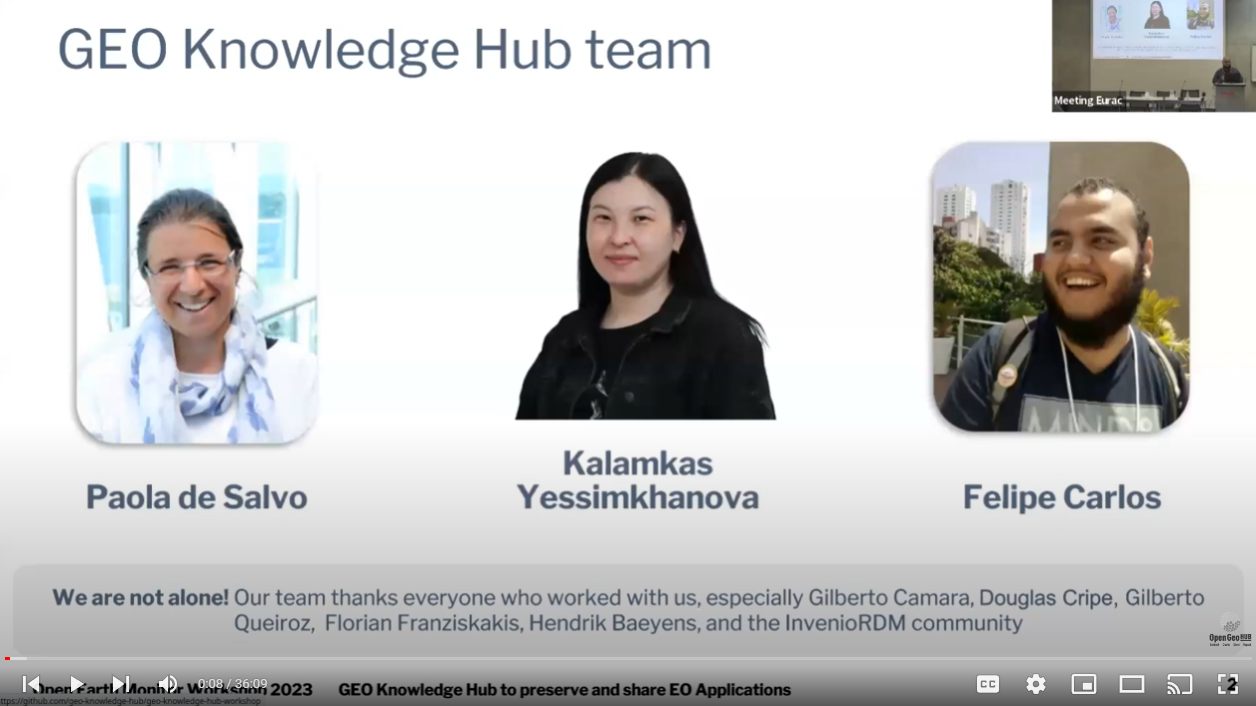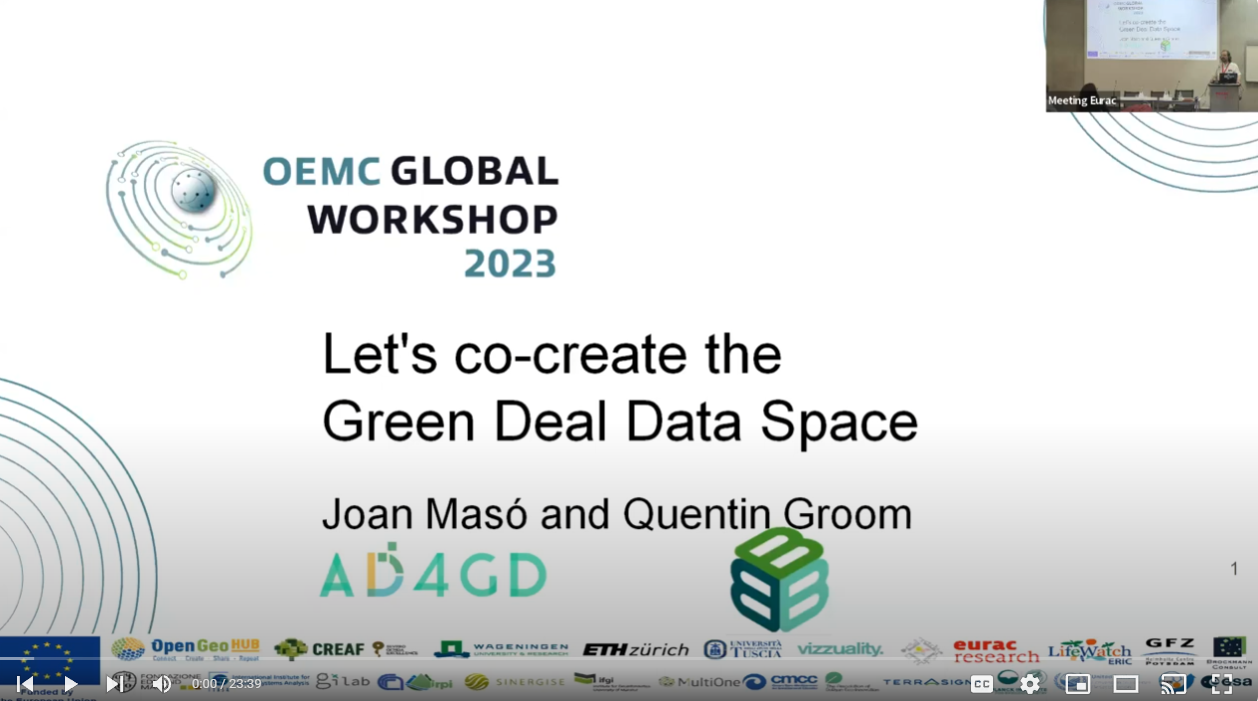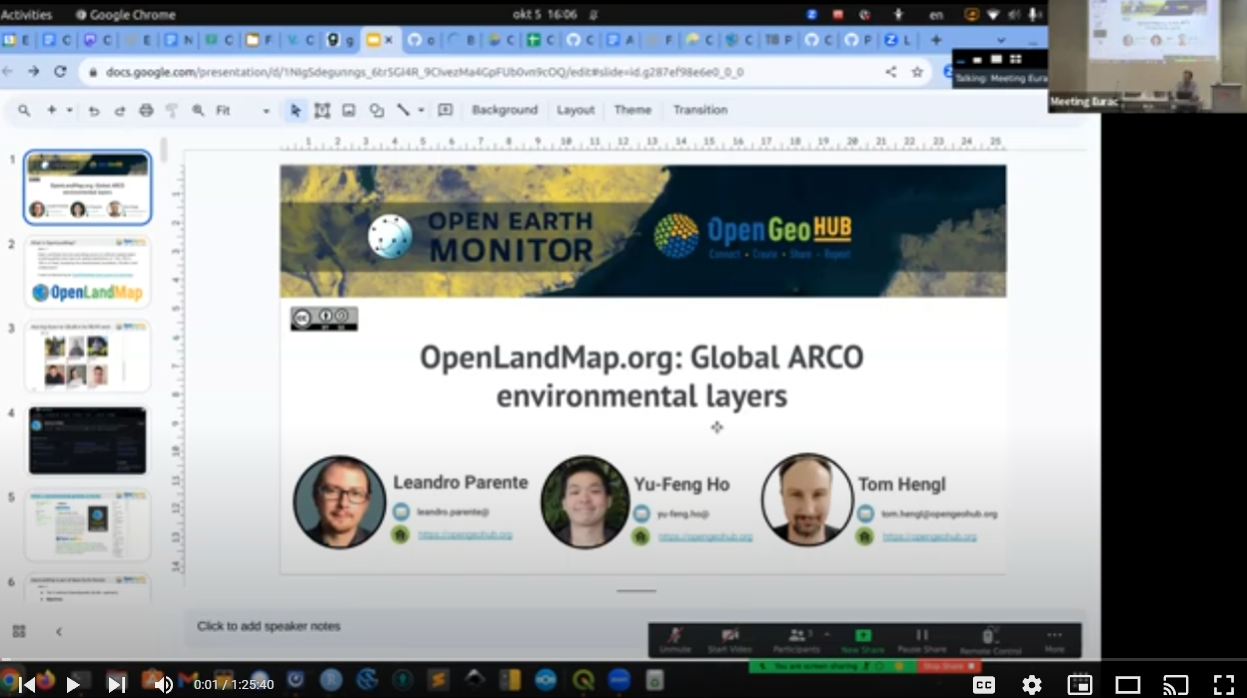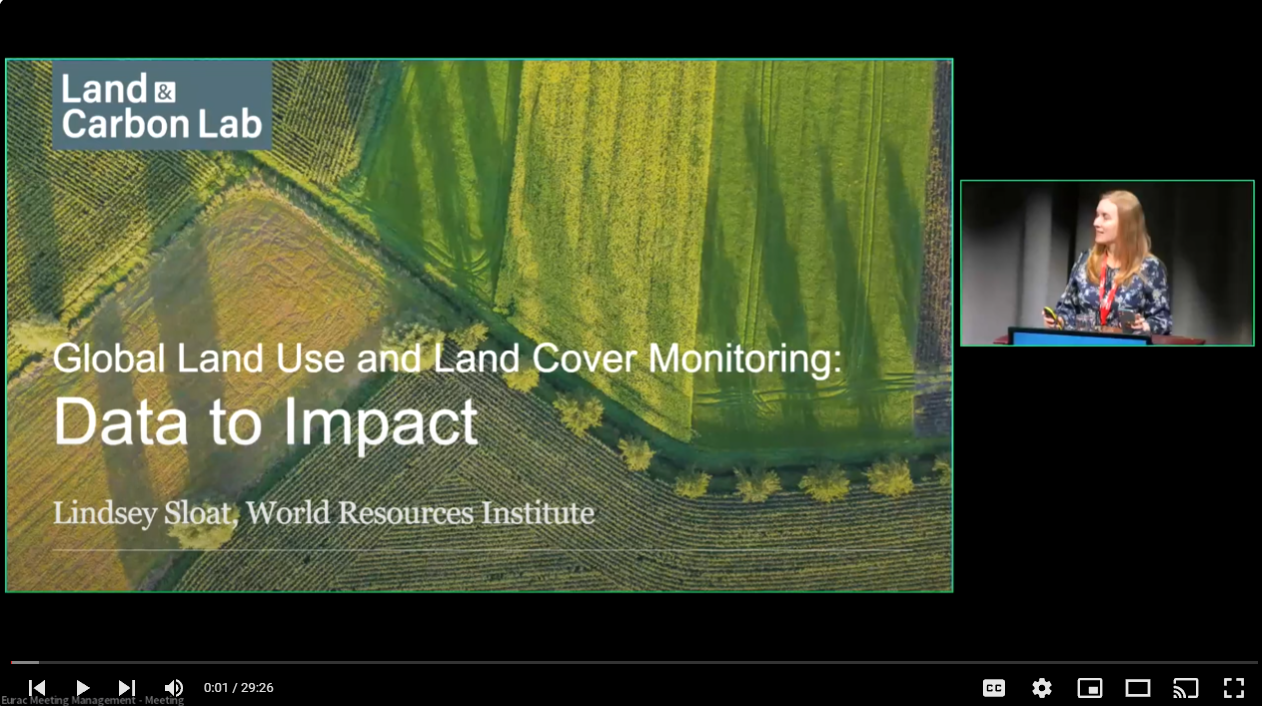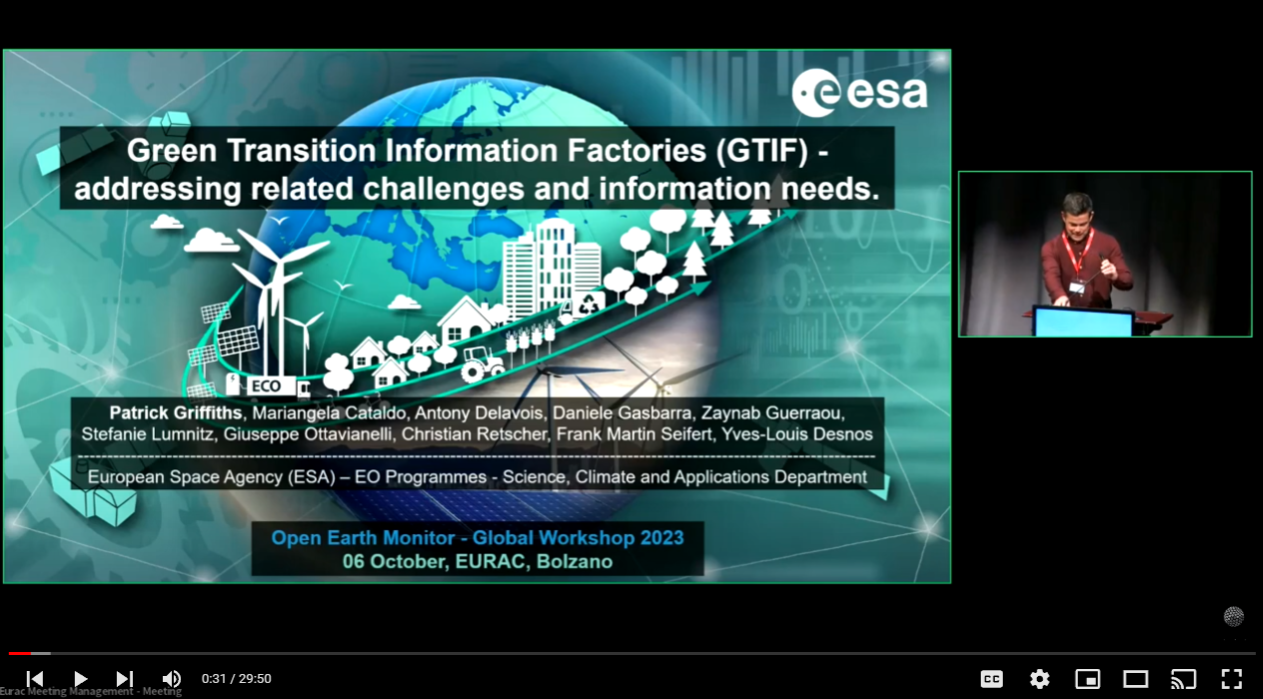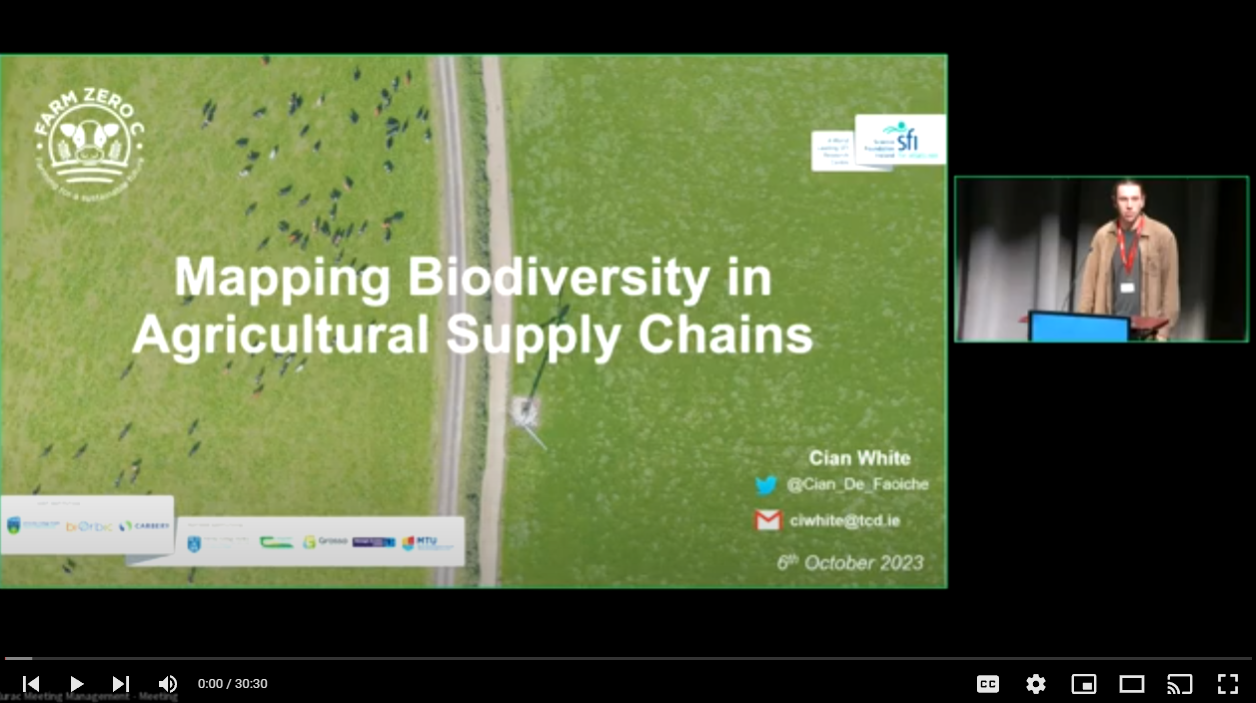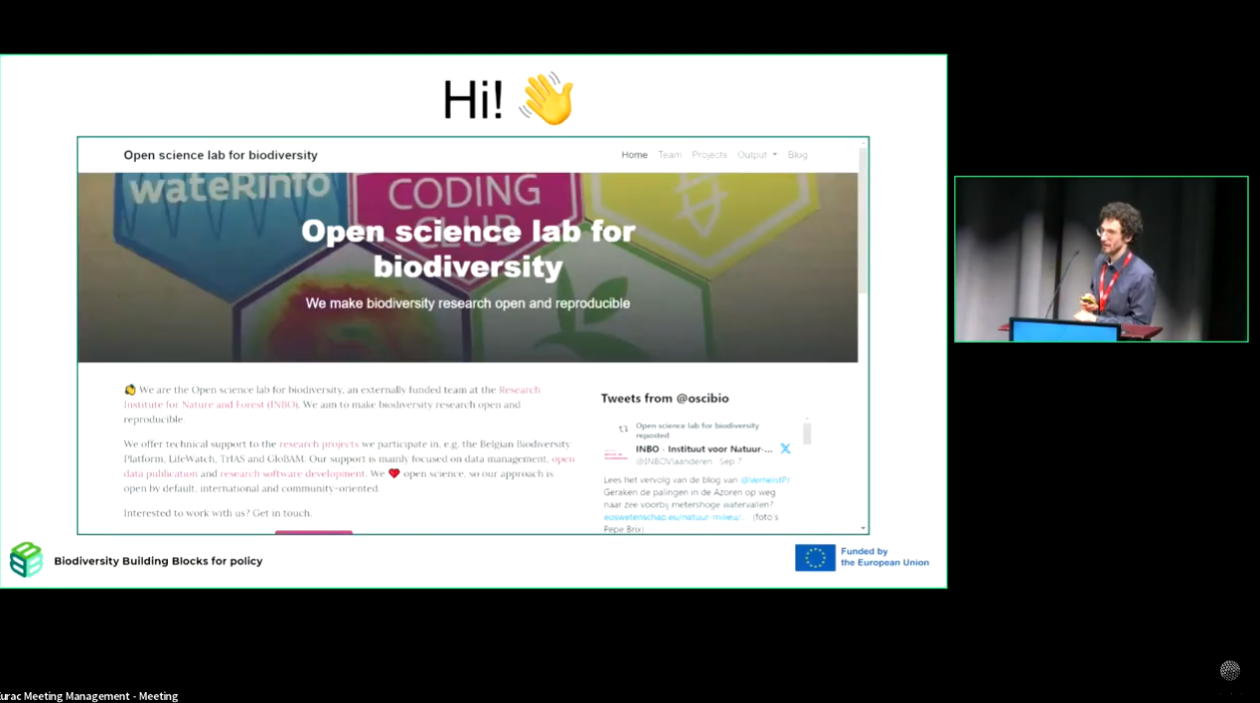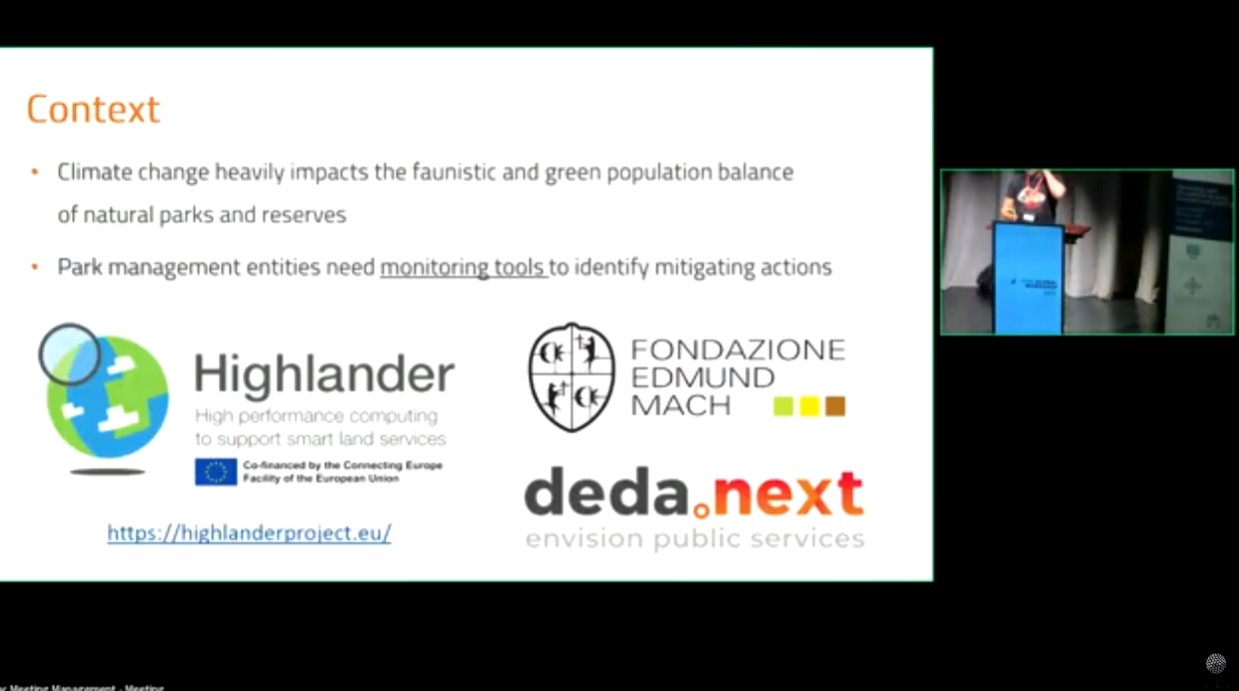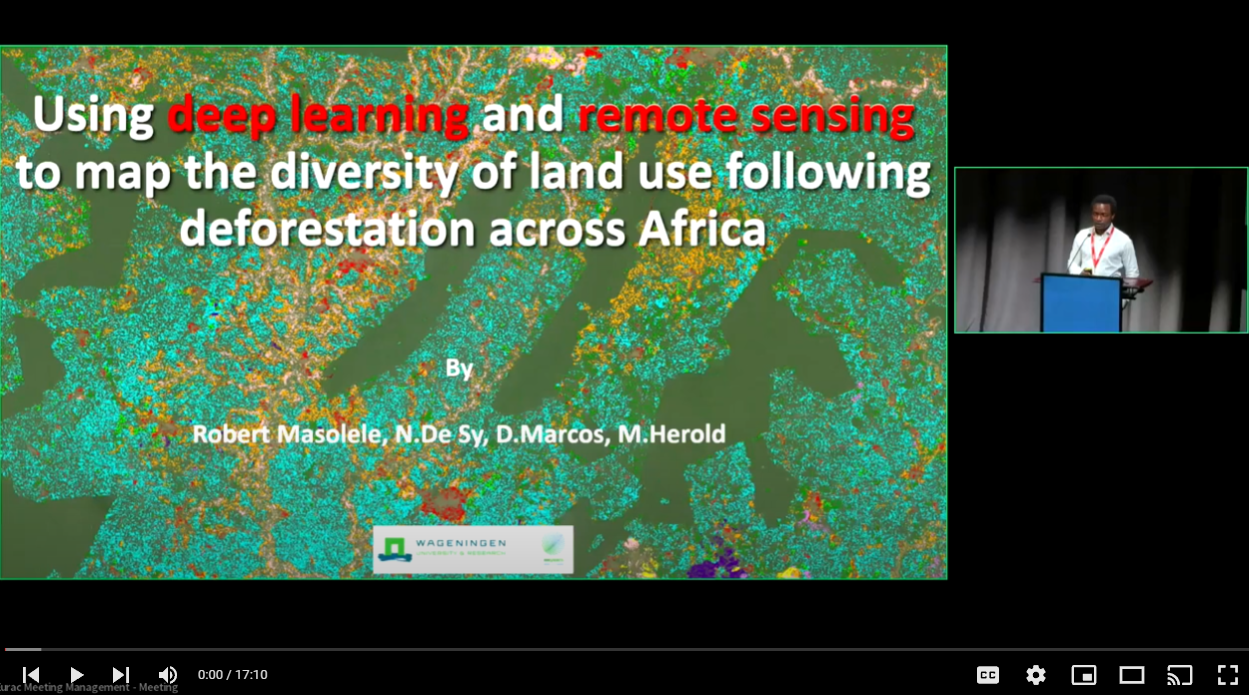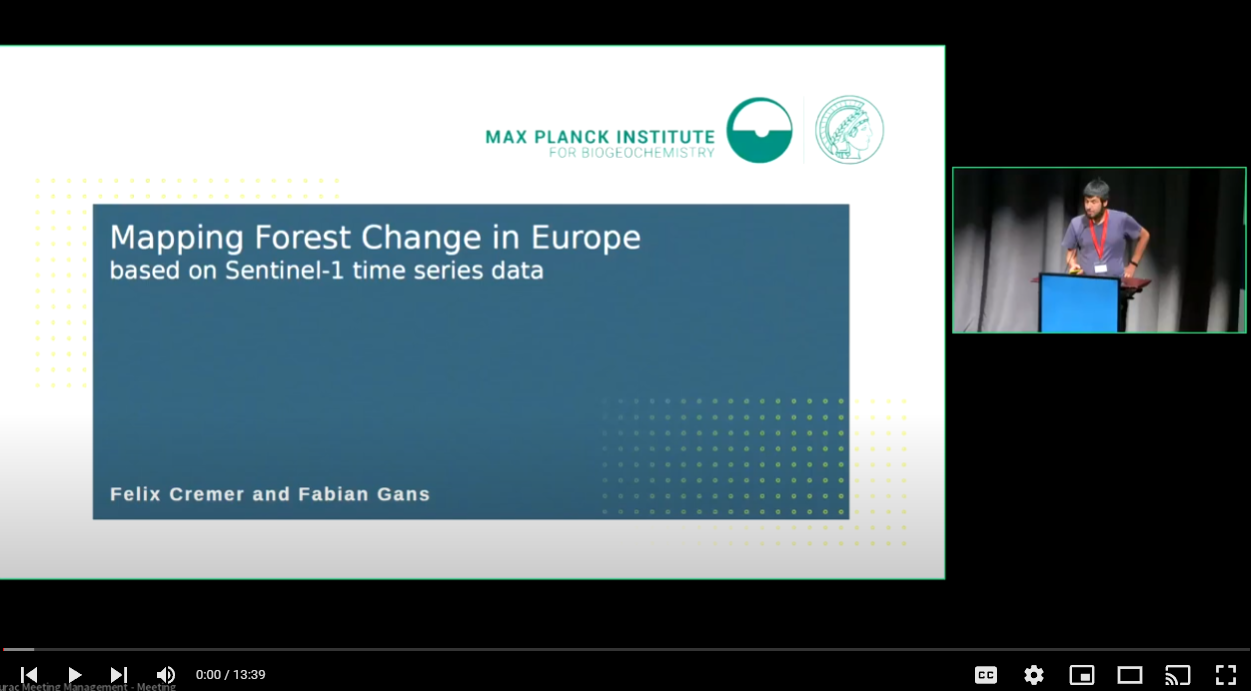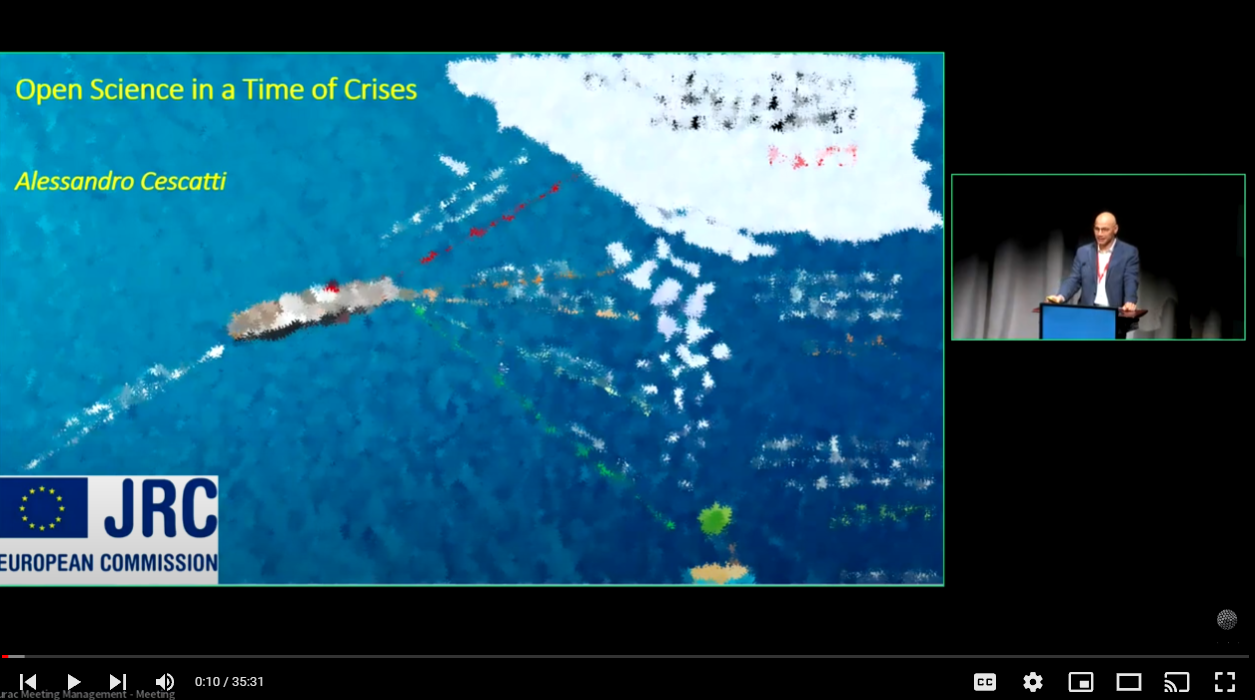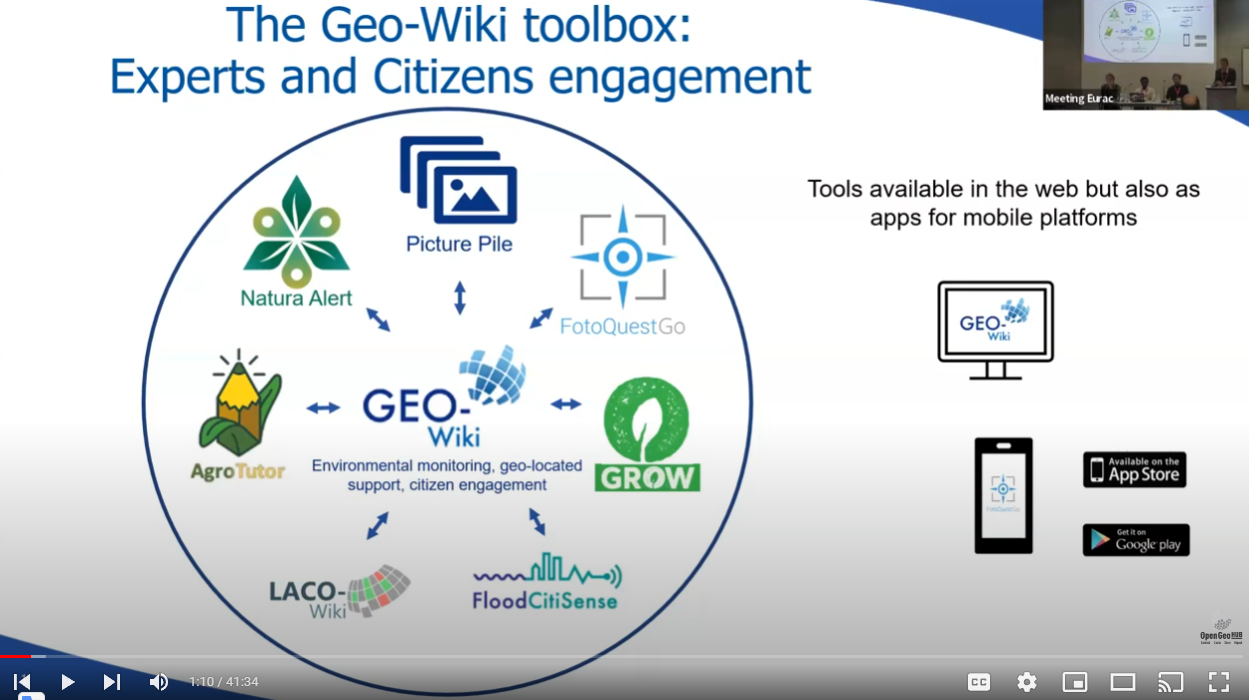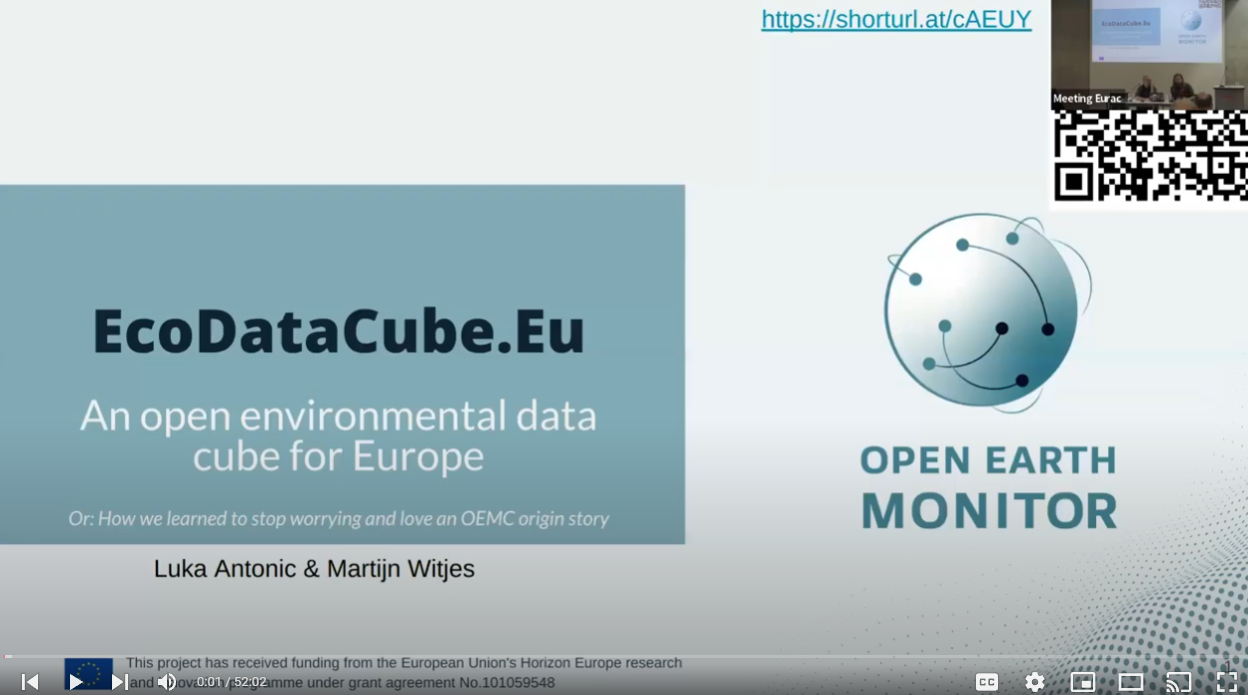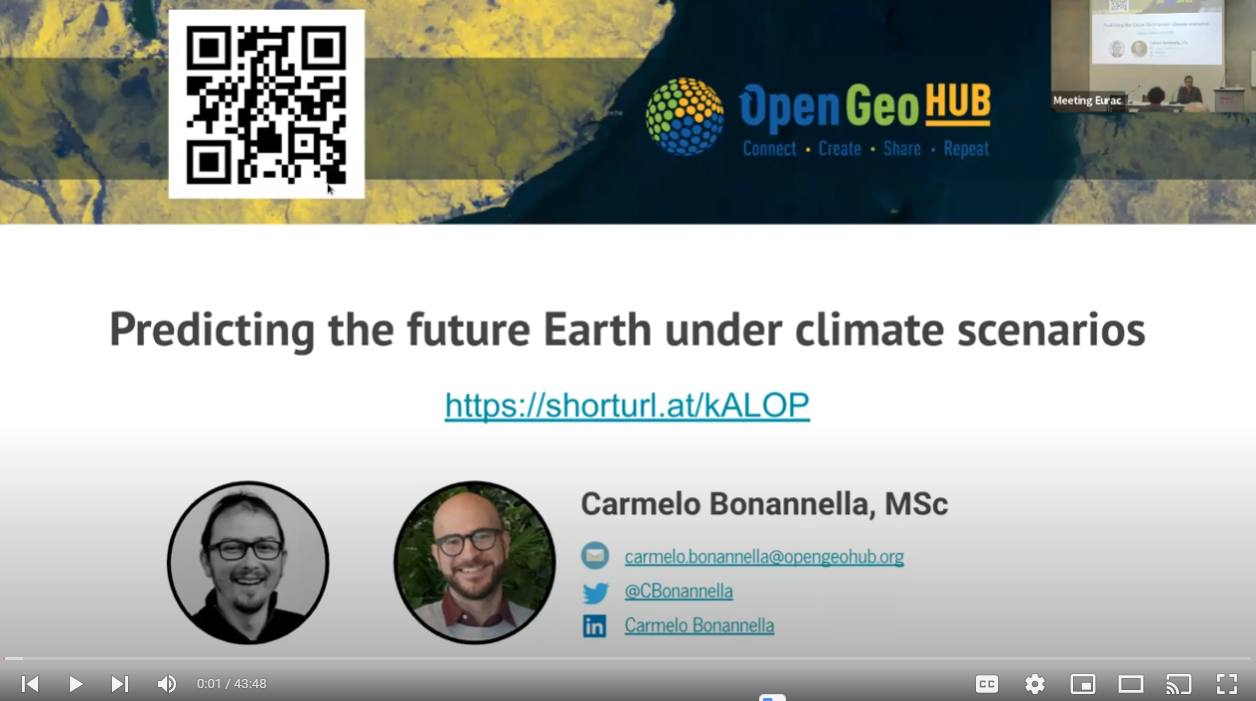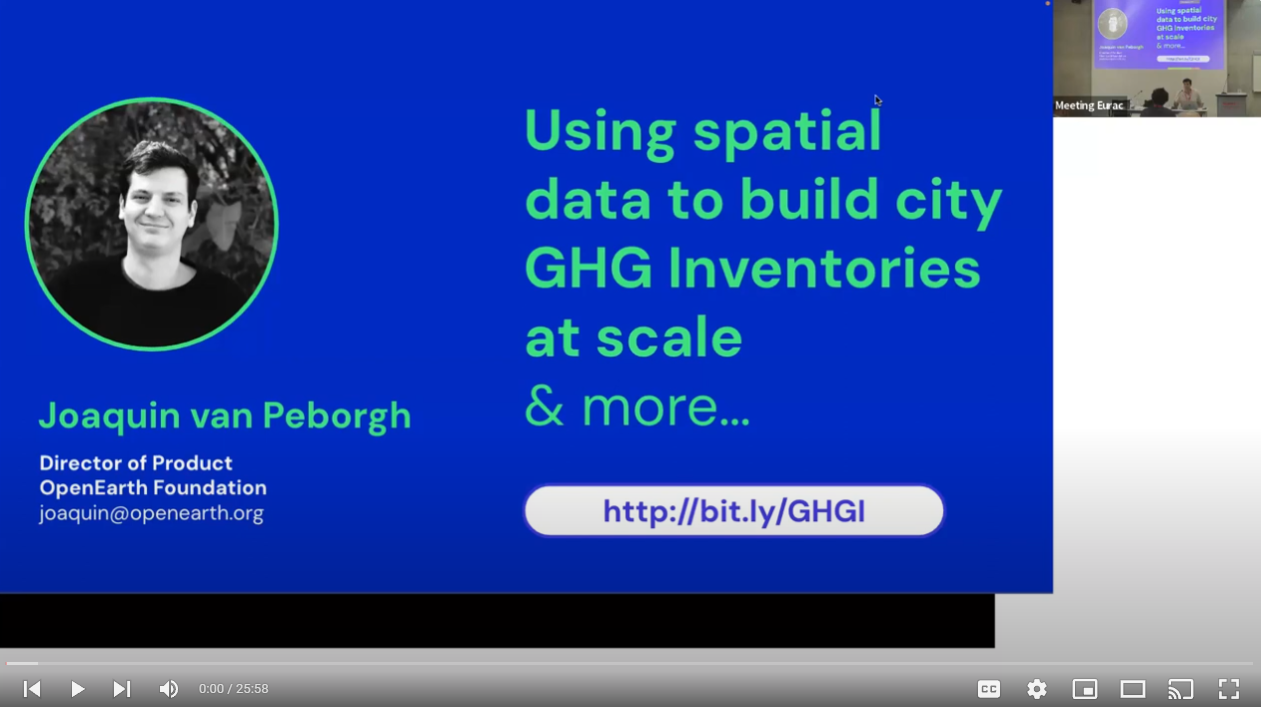The OEMC video repository is an online resource that shares open-access talks, webinars, and educational materials such as trainings sessions. This is an online learning environment that aims at sharing and disseminate OEMC’s discoveries and outputs for Earth Observation analysis, integration and applications.
The content is hosted by the TIB.Av Portal and is freely accessible for anyone around the globe. Any problem? Contact us!
Global Workshop 2023
Organized by OpenGeoHub foundation in collaboration with Eurac Research, the Open-Earth-Monitor Global Workshop 2023 brought together European and global actors in the field of open-source Earth Observation applications in policy, business, research and for society. See the webpage for more detail.
OEMC Global Workshop 2023
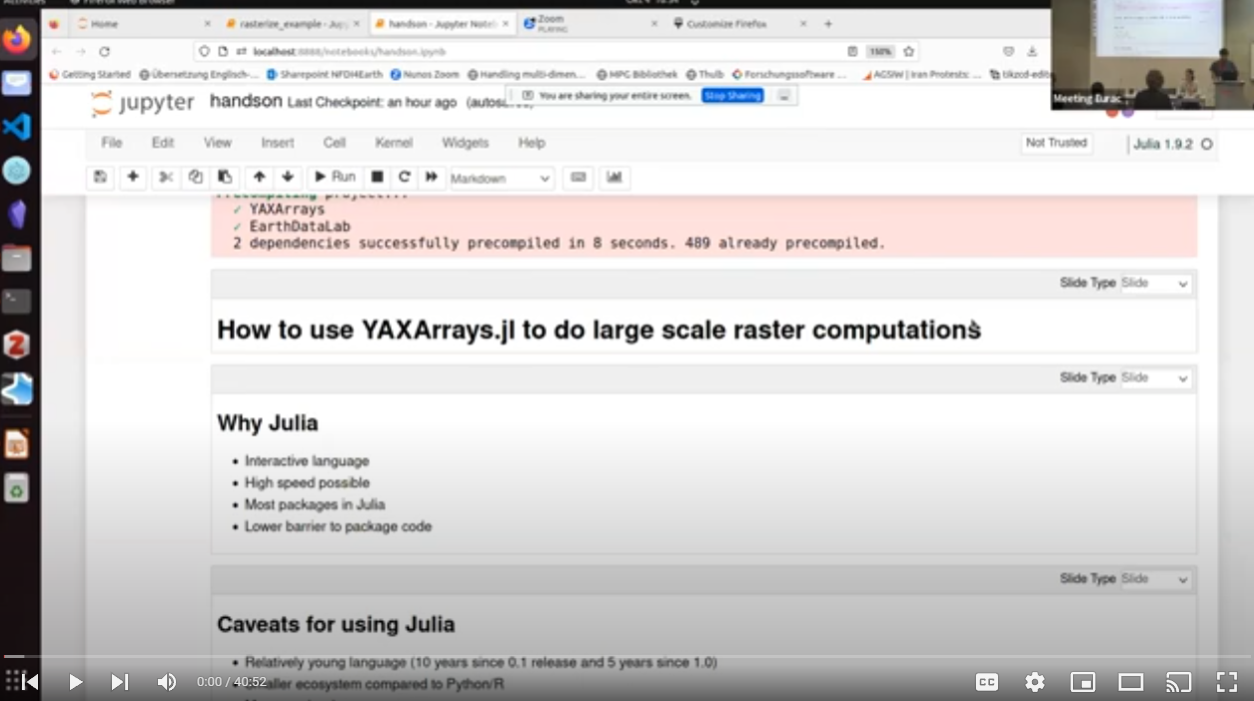
Felix Cremer and D. Loos: Distributed computing on large geodata from multiple sources using Julia
40:52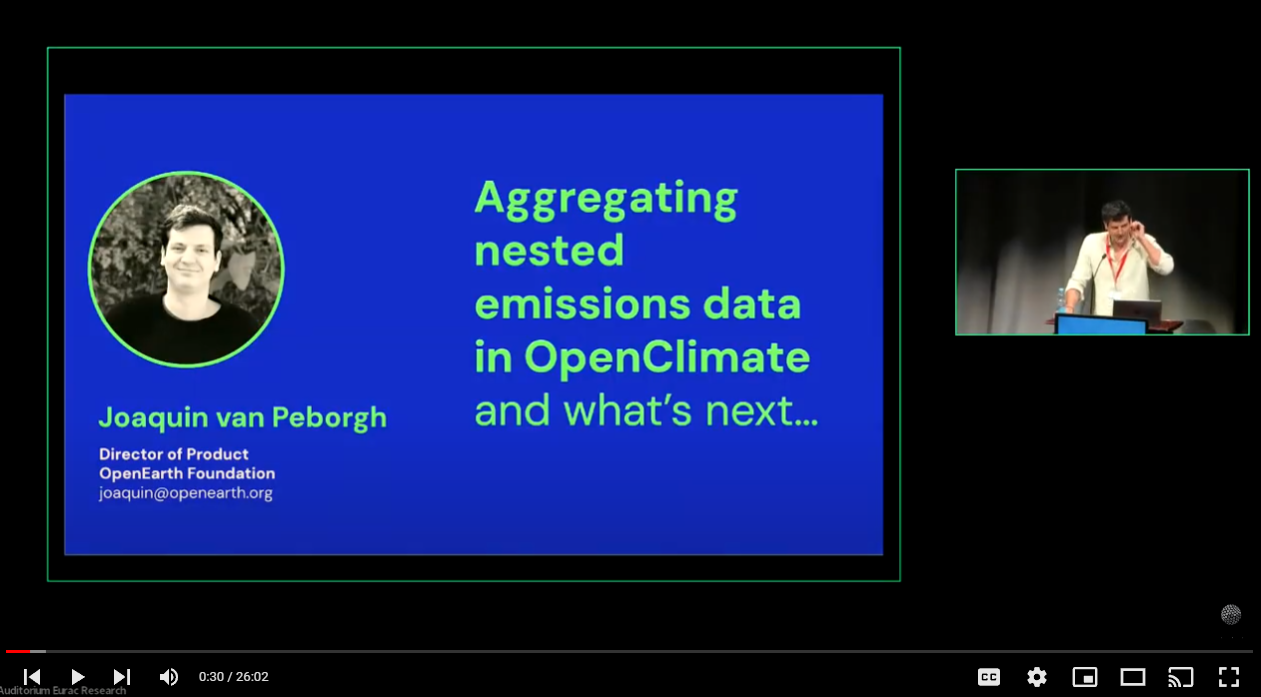
Joaquin van Peborgh: Aggregating multiple emissions data for actors at all levels (OpenClimate)
26:02
Raniero Beber: Estimation of urban heat island integrating IoT sensors and EO thermal open data
18:18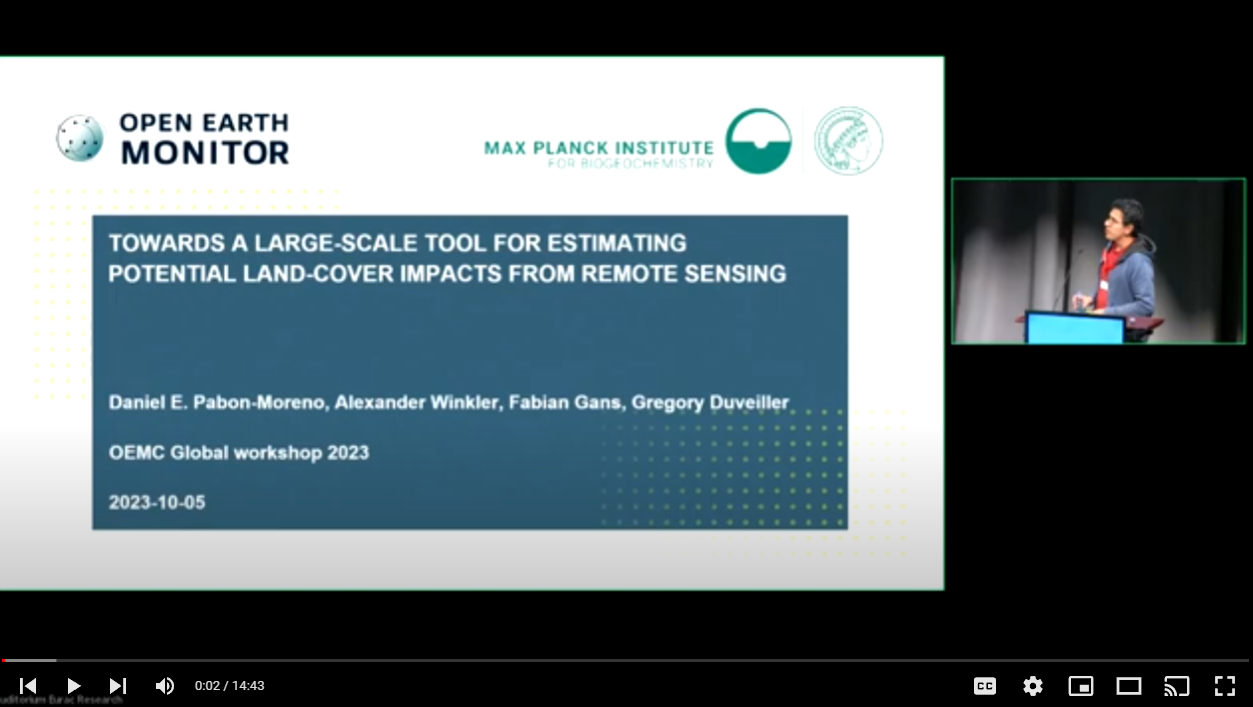
Daniel Pabon-Moreno: Towards a large-scale tool for estimating potential land-cover impacts from RS
14:43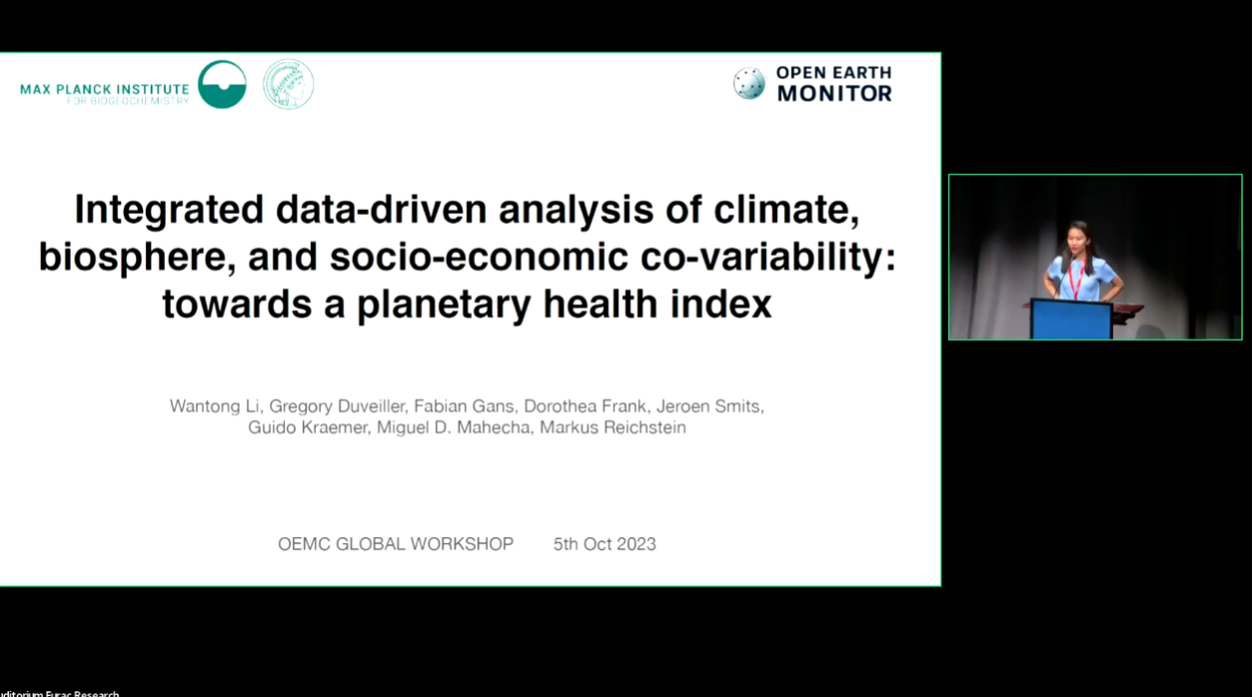
Wantong Li: Integrated data-driven analysis of climate, biosphere and socio-economic co-variability
32:28
Arnan Azara: The System of Environmental Economic Accounting: connecting spatial data and users
31:50
Stathes Hadjiefthymiades: ML tools and systems support for EO data processing and applications
01:26:40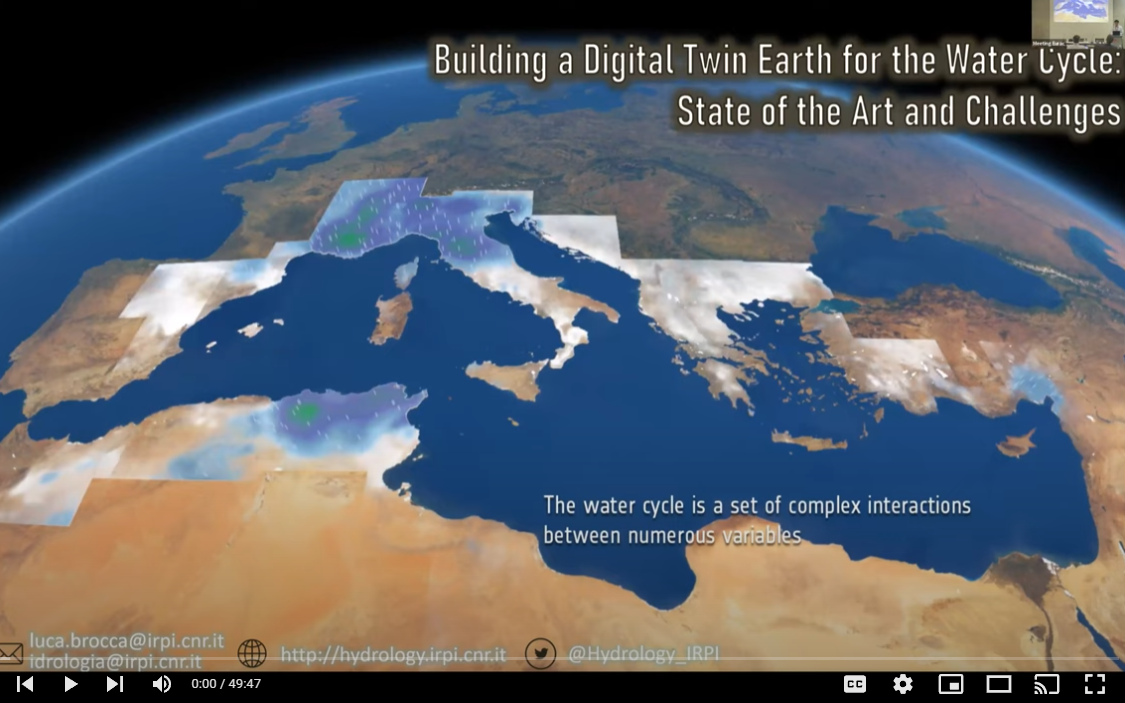
Luca Brocca: Building a Digital Twin Earth for the Water Cycle State of the Art and Challenges
49:47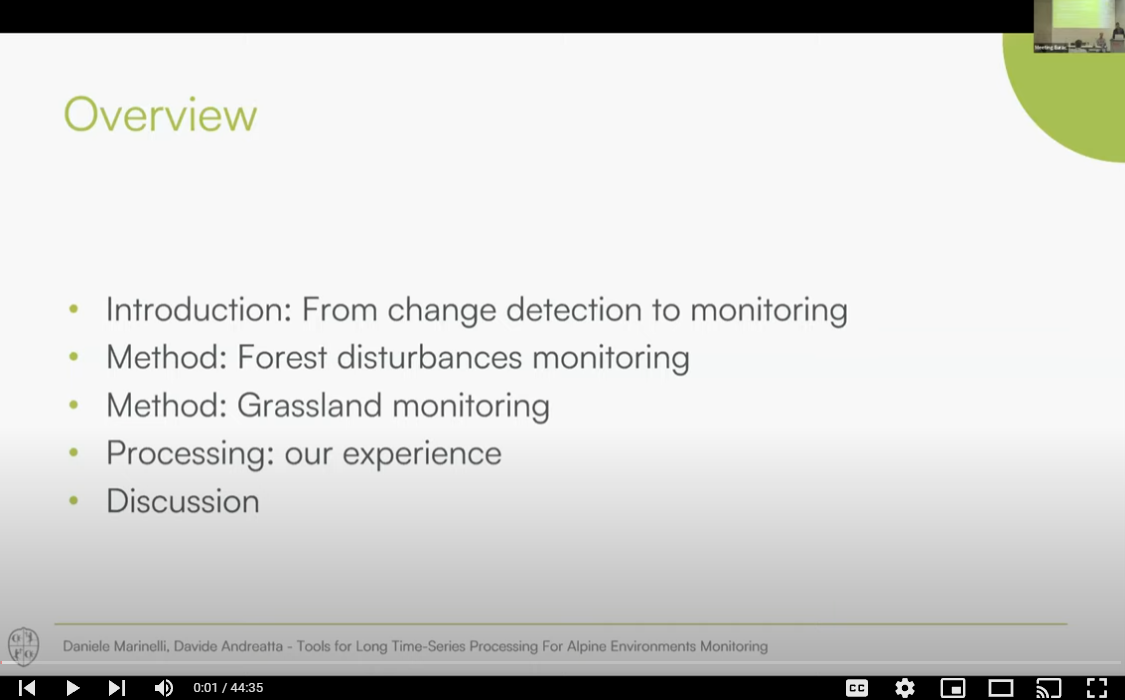
Daniele Marinelli / D. Andreatta: Tools for Long Time Series Processing For Alpine Env. Monitoring
44:35
Victor Maus: Overcoming Data Scarcity in Land Use Monitoring with Time-Weighted Dynamic Time Warping
15:30Science Webinars
The Open-Earth-Monitor project, funded by the EU Horizon Europe research and innovation programme, organizes monthly science webinar hosting two researchers working with Earth Observations, geospatial environmental data, monitoring networks and alert systems and their applications.
2023
This presentation showcased the OpenClimate platform, the data schema and data aggregation work done, and its roadmap and opportunities of collaboration for the open source and open data community.
In this presentation, Quentin Groom wanted to give attendees a sense of biodiversity data, where it comes from, what they want to learn from it, and what the challenges are. He did this in the context of the B-Cubed project (https://doi.org/10.3030/101059592) that aims to contribute to solving some of these challenges and made particular reference to citizen science for the collection of data and the advantages and challenges this presents.
Paolo Filippucci presented a methodology to derive river discharge information from near-infrared (NIR) satellite sensors. The approach has been applied to different river basins worldwide in the framework of the ESA projects RIDESAT, STREAMRIDE, HYDROCOASTAL and 4DMED-hydrology, by using NIR data sensed by MODIS and Sentinel-2 sensors.
In this presentation, Joan Maso showed that in order to make sense of sensor data, a data model that semantically tags the data is needed. Sensor Things API helps to map “data columns” to concepts (time, observed property, location, etc.), making the data machine-readable, and as a bonus, this structured API has rich query capabilities.
This presentation is an overview of the development of CEOS-ARD, its current status, and provided an outlook on the next steps in CEOS-ARD and the OGC SWG.
The ADO Project is about creating a scientifically sound operational drought information web platform aiding decision makers on an alpine to regional level in managing water resources and drought impacts. The ADO web platform feeds on big data satellite and climate archives on the input side and shows curated drought information through an interactive web platform for stakeholders and decision makers. The presentation guides through the concepts, operational maintenance and update and shows the web platform in action.
This presentation showcases the community needs in terms of in situ data (collected from automated sensors, ground measurements in various thematic areas remains), following an inventory that was done with 28 activities from the GEO Work Programme.
2024
This talk provided a brief overview of the Geo-Wiki application for the collection of land cover and land use reference data using crowdsourcing and the visual interpretation of very high-resolution satellite imagery. These reference data have been used to create training data sets and to validate land cover/land use products in a range of different applications including cropland extent, forest management and the drivers of deforestation, which will be presented in brief.
Workshop "Present and Future of Data Cubes"
The Open-Earth-Monitor project organized a workshop on state-of-the-art Data Cube solutions, what is missing and how to prepare for the future during the EuroGEO workshop 2022. The objectives were to review existing top-level solutions to organize large EO data, share and enable researchers and organizations to make use of it for applied purposes; understand which Open Source solutions provide cutting-edge functionality to process EO data and how to make EO data processing more transparent and more reproducible; Moderators: Tom Hengl and Carson Ross (OpenGeoHub).
The EcoDataCube is an Open Data Portal, a freely-accessible viewer containing gridded layers for Europe at spatial resolutions of 30-m or more. The maps are produced using FOSS4G software solutions, Machine Learning and Open Earth Observation data. The Open Environmental Data Cube for Europe data aim at serving decision-ready layers such as land cover, air quality and pollution, potential natural vegetation and similar and it was part of the Geo-Harmonizer project that ended in 2022. At the workshop organized by the Open-Earth-Monitor project in Athens during the EuroGEO 2022, Leandro Parente from the OpenGeoHub foundation presented the EcoDataCube.eu
AD4GD’s mission is to co-create and shape the European Green Deal Data Space as an open hub for FAIR data and standards-based services that support the key priorities of pollution, biodiversity and climate change. The focus will be on interoperability concepts that bridge the semantic and technology gaps which currently prevent stakeholders and application domains from multi-disciplinary and multi-scale access to data, and which impede the exploitation of processing services, and processing platforms at different levels including Cloud, HPC and edge computing. Joan Maso from Centre de Recerca Ecològica i Aplicacions Forestals (CREAF) showed the AD4GD project at the workshop organized by the Open-Earth-Monitor project in Athens, during the EuroGEO Workshop 2022.
B3 (B-cubed) stays for Biodiversity Building Blocks for policy and it is an upcoming Horizon Europe project that will use the concept of data cubes to simplify and standardize access to biodiversity data using the Essential Biodiversity Variables framework. These cubes will be used, in conjunction with other environmental data and scenarios, as the basis for models and indicators of past, current and future biodiversity. The overarching goal of the project is to provide easy access to tools in a cloud computing environment, in real-time and on-demand, with state-of-the-art prediction models of biodiversity, that will output models and indicators of biodiversity status and change. At the workshop organized by the Open-Earth-Monitor project in Athens during the EuroGEO 2022, Quentin Groom from the Plantentuin Meise presented the B3 project.
F.A.I.R. Information Cubes – FAIRiCUBE aims to enable players from beyond classic Earth Observation (EO) domains to provide, access, process, and share gridded data and algorithms in a FAIR and TRUSTable manner. This project’s goal is to leverage the power of Machine Learning (ML) operating on multi-thematic datacubes for a broader range of governance and research institutions from diverse fields, which at present cannot easily access and utilize these potent resources. At the workshop organized by the Open-Earth-Monitor project in Athens during the EuroGEO 2022, Stefan Jetschny from the Norwegian Institute for Air Research presented the FAIRiCUBE.
Upcoming
Kick-off Event
The mission of the Open-Earth-Monitor project consortium is to significantly accelerate the uptake of environmental information to guide current and future users in research, decision-making and citizens toward the most sustainable solutions. The consortium organized a public launch event in Wageningen on July 19th, 2022 to present the OEMC missions, activities, outputs and outstanding partners of the Open-Earth-Monitor project.



